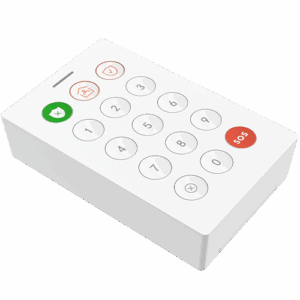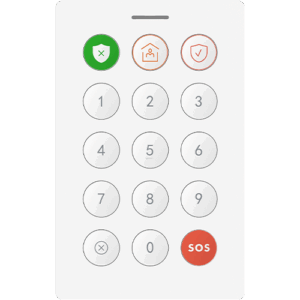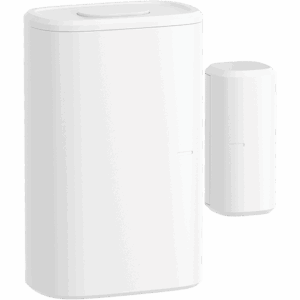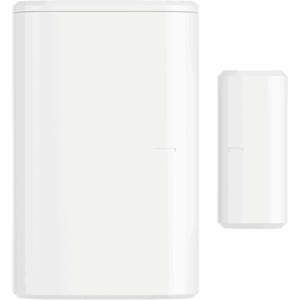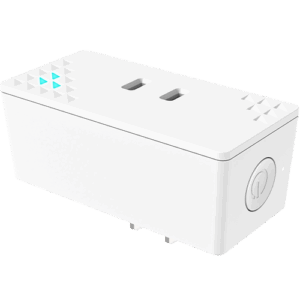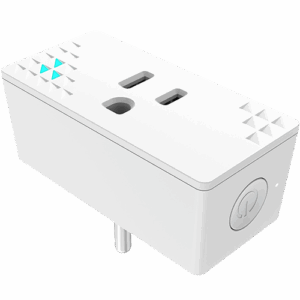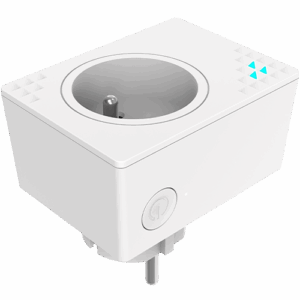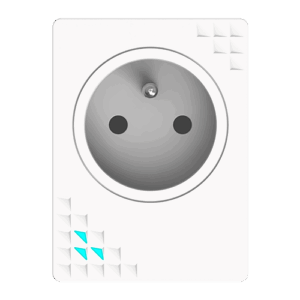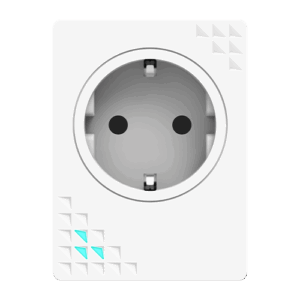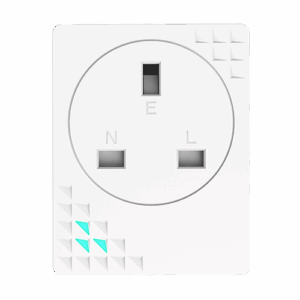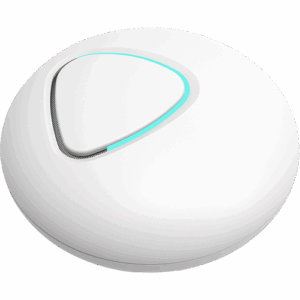Key Takeaways
- Ambient sensing detects and provides insights into changes in environmental conditions.
- Ambient sensing works by using a range of sensing technologies (such as Wi-Fi sensing, PIR sensors and temperature sensors) to pick up general changes in the environment.
- Ambient sensing has a range of benefits, for both individuals personally, and broader commercial benefits.
- The perceived downsides of ambient sensing can be best mitigated by robust data and privacy protections.
Google cars taking pictures of houses for Google Maps were caught inadvertently picking up web browsing data from the Wi-Fi networks of the houses they passed. One might say this is ‘ambient sensing, gone wrong’: The cars were passively picking up quantities of environmental information that they were not supposed to be collecting.
So, what exactly is ambient sensing? Here, we look at how ambient sensing has been defined within the industry, the benefits of ambient sensing, and how it can be successfully integrated into your smart home or smart facility.
What is ambient sensing?
Ambient sensing is sensing technology that gathers data about one’s surroundings. This data can be used for a variety of purposes, such as understanding the environment, providing information to users, or controlling devices. Put this way, wouldn’t any form of sensing technology count as ‘ambient sensing’?
The key is to think of ambient sensing, not as a specific type of hardware or software, but rather as a way in which technology can be used. For example, smart homes are equipped with acoustic sensors that respond to specific commands. This is not ambient sensing as it is not drawing insights from the general conditions that surround it (i.e., all the sounds it is hearing).
On this interpretation, we could call ‘non-ambient’ sensing, ‘direct sensing’ — sensing which is calibrated to specific, discrete, inputs.
The goal is to have an entire set of contextual information, from which insights can be drawn and interpreted. When action is taken automatically, on the basis of learned insights from ambient sensing, the building may be said to have ambient intelligence in place.
How does ambient sensing work?
In ambient sensing, a whole set of sensors work together to provide information. While, in principle, nearly any sensor could be calibrated as an ambient sensor, some of the most common forms of ambient sensing include:
- Temperature sensors, which can keep a constant check on temperatures within the home. Average temperatures could be used to provide indications as to whether the home remains at a healthy temperature or not
- Pressure sensors, which can work with temperature sensors to form a picture of weather conditions around the home
- Water sensors, which can provide information about increased humidity in the home.
- Object sensors (with RFID tags or GPS trackers), which might be placed on key items, or individuals. to draw general insights on use and movement.
Is Wi-Fi sensing a type of ambient sensing?
As mentioned earlier, ‘ambient sensing’ does not mean a particular type of technology, but rather a certain way in which technology is used. When used for intruder detection alone, for example, Wi-Fi sensing would not be ambient sensing: It is focused on picking up specific human activity. But Wi-Fi sensing can also be used for general analytics and insights into the living environment. For example, through Wi-Fi sensing, one could identify patterns in energy use within the home (as appliances are turned off and on in tandem with motion).
This is true of many other modern types of sensing technology as well:
- Passive infrared (PIR) sensors can be used as ambient sensors. For example, in one recent study, PIR sensors were used to pick up general motion within the home and analyze it, but not to pick out the motion of any particular person (read more about PIR sensors in our comprehensive guide to using PIR).
- Video cameras, when combined with AI algorithms, can be used to interpret which times of the day are busiest and which are slowest.
What are the benefits of ambient sensing?
There are many potential benefits to using ambient sensing within a smart home, such as:
- Improved safety — Wi-Fi sensing in a care facility could provide general information on where falls are occurring so that any obstacles or poor design can be fixed.
- Property damage is reduced, as ambient sensors pick up water leaks and significant humidity changes before substantial damage is done.
- Enhanced comfort, as constant monitoring of temperature, or humidity, can lead to wholesale adjustments within the home.
- It complements direct sensing insights, as direct motion detection can be combined with environmental sensors to provide more robust insights.
- Enhanced decision-making, through detailed environmental data. For example, a clothing store might take general data on the movement of customers into account when determining the layout of its clothing display.
Are there any downsides to ambient sensing?
While there are many potential benefits to ambient sensing, it is not without its drawbacks:
- Ambient sensing stokes a fear of ‘continuous monitoring’: With ambient sensing, a significant amount of data is being collected on the property at all times. This information might be sold into a larger database of information, and/or be misused if it is to get into the wrong hands.
- The data detected may itself be personal data, the release of which would be a privacy breach. For example, GPS tracking data of a person walking across a large rural property, might be used to determine whether they are in the house or not. Strong protection measures need to be in place to ensure that personal information is protected.
- ‘Data obesity‘, which occurs when more data than is necessary has been collected. Spare a thought for the marketers — where too much data has been collected, it becomes very difficult to sift through and draw out any meaningful insights.
In order to manage these potential risks of ambient sensing, it is crucial that all technology deploying ambient sensing has appropriate cyber-security and data protections in place.
Conclusion
FAQ
Radar sensing technology is widely used in various industries, including automotive (for collision avoidance and adaptive cruise control), aerospace (for navigation and weather monitoring), healthcare (for patient monitoring and fall detection), and smart homes (for security and energy management).
Ambient sensors are any devices which can detect changes in general environmental conditions.




